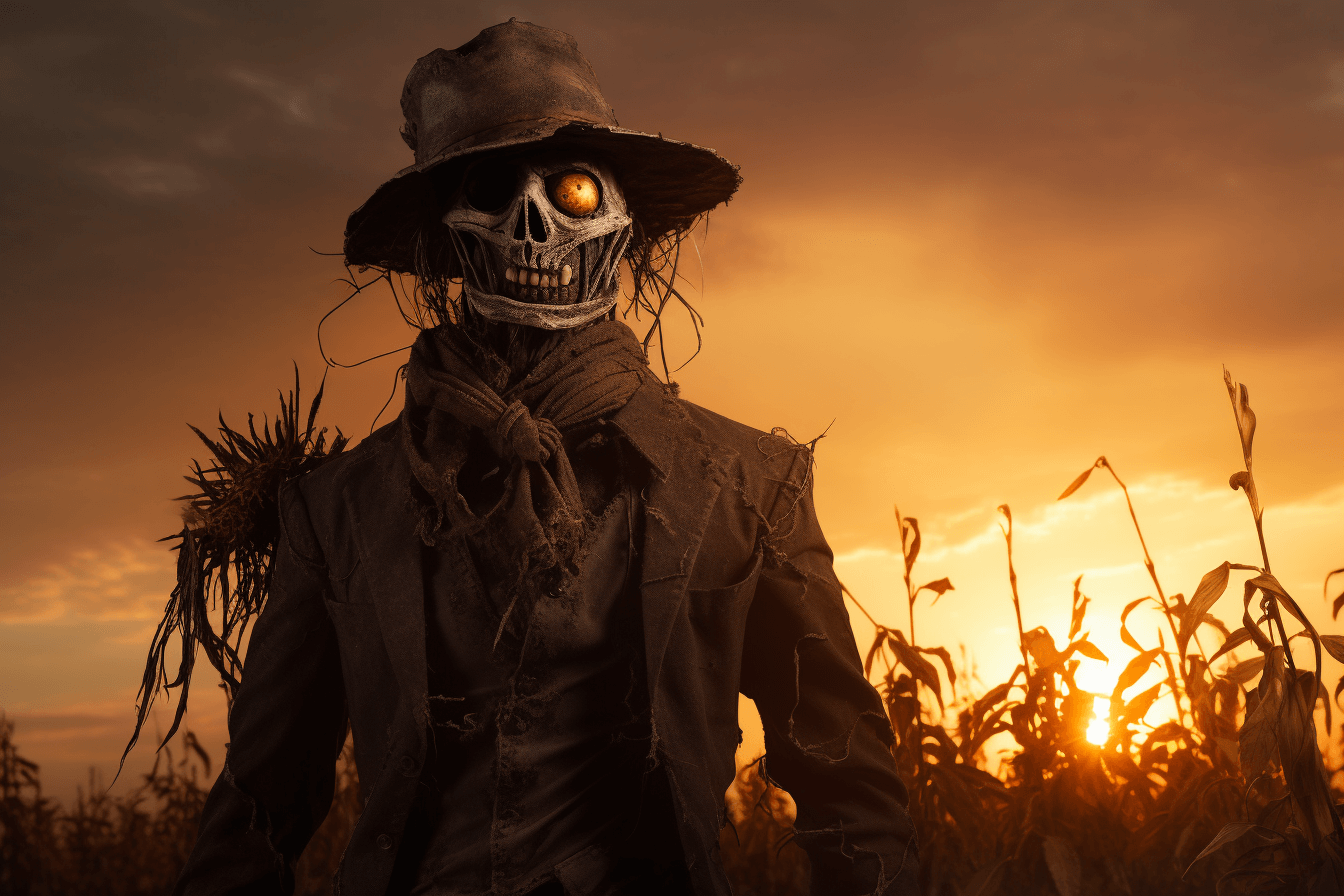Hans Trapp: The Christmas Cannibal Scarecrow
As we delve into the intriguing legend of Hans Trapp, we find ourselves traversing through the rich tapestry of history, folklore, and human psychology that has woven this chilling narrative. Nestled in the French regions of Alsace and Lorraine, the legend of Hans Trapp emerged against the backdrop of the 1400s, a time when the ominous figure of this Christmas scarecrow struck fear into the hearts of locals.
But why did such dark tales take root in this region, and what historical elements contributed to the creation of this boogeyman? Join us as we embark on a journey through a bone-chilling narrative that is anything but your typical Christmas carol. Prepare to meet the anti-fairy tale that is Hans Trapp: The Christmas Cannibal Scarecrow.
Can’t get enough of our enticing tales from the dark side? Experience these hair-raising chills in person on an unforgettable ghost tour with US Ghost Adventures!
The German Knight
Hans Trapp, known initially as Hans von Trotha, was a German knight and marshal of the prince-elector of the Palatinate. Born around 1450, he wielded power and influence, commanding two castles and earning the French honorary title of Chevalier d’Or. The strife that unfolded between von Trotha and the church, leading to his excommunication, mirrors the power struggles and conflicts of the time.
It was a tale of defiance, revenge, and, most notably, a damming of the Wieslauter River that left the downstream town of Weissenburg without water. Such actions, though not as gruesome as the legend suggests, undoubtedly left a lasting impression on the local populace.
The association of Hans Trapp with the Black Knight, a formidable specter sometimes linked to Santa Claus in local legends, reflects a blending of reality and myth. Von Trotha’s towering stature and defiance against both the church and the emperor added layers to his persona, contributing to the creation of a figure that transcended his historical identity.
The local folklore, in its evolution, transformed von Trotha into Hans Trapp, a restless spirit haunting the Wasgau at night and even a character used to frighten children in Alsace.
The Legend of The Christmas Scarecrow
Legends say his thirst for power led him down a treacherous path, making deals with the Devil himself. Trapp, with his dreams of power shattered, retreated to the misty mountains of Bavaria in Germany. Here, in his makeshift home, he brooded, and his once-human desires twisted into something dark and sinister.
It was during his isolation that he developed a taste for the forbidden, a hankering for the flavor of human flesh. Quelle horreur! And so, he transformed into the Christmas scarecrow, draped in straw, waiting on desolate roads for an unsuspecting victim.
One fateful day, a young shepherd’s boy, innocent and tender, crossed paths with this frightful figure. Trapp, with a heart colder than the winter winds, stabbed the poor lad with a sharp stick. Oh, but it gets darker, ma chère. He carried the limp body back to his lair, slicing it into pieces and roasting it like some macabre feast.
But lo and behold, before he could feast upon his gruesome meal, a divine lightning bolt, a punishment from the heavens, struck him down. His wicked spirit, they say, still lingers, haunting naughty children in the guise of a scarecrow, a boogeyman in the dark, ready to pounce if they stray from the path of goodness.
The Reign of Hans Trapp
The tales of St. Nicholas’ wingman vary. In some instances, Hans appears to naughty children decked out in his petrifying scarecrow ensemble and attempts to scare them straight. In other versions, the brooding figure isn’t so remorseful for his past deeds, going so far as to mark the children he plans to eat for his Christmas Eve feast. In either case, would you dare tempt this archaic being to come forth?
With the legend of Hans Trapp, one can’t help but be drawn into the mystique where reality and folklore dance on the edges of perception. This chilling tale invites us to reflect not only on the historical events that inspired it but also on the human psyche’s fascinating ability to shape stories that linger in our collective consciousness. As we unravel the layers of this legend, it beckons us to consider the thin veil between history and myth, between the known and the mysterious.
A Final Warning
As is the case with most holiday antagonists, the legacy of Hans Trapp is alive to serve as a warning to those who may need some extra motivation to contemplate consequences before acting. His presence as a horrifying scarecrow is enough to incite fear in anyone, but his taste for human flesh ensures a child is on their best behavior should Hans’s appearance not be enough.
Ready to discover the spirits and beings that haunt your town? Embrace this unique journey by venturing with us here at US Ghost Adventures on one of our many ghost tours throughout the US!
Sources:
https://www.ripleys.com/weird-news/hans-trapp/
https://en.wikipedia.org/wiki/Hans_von_Trotha





